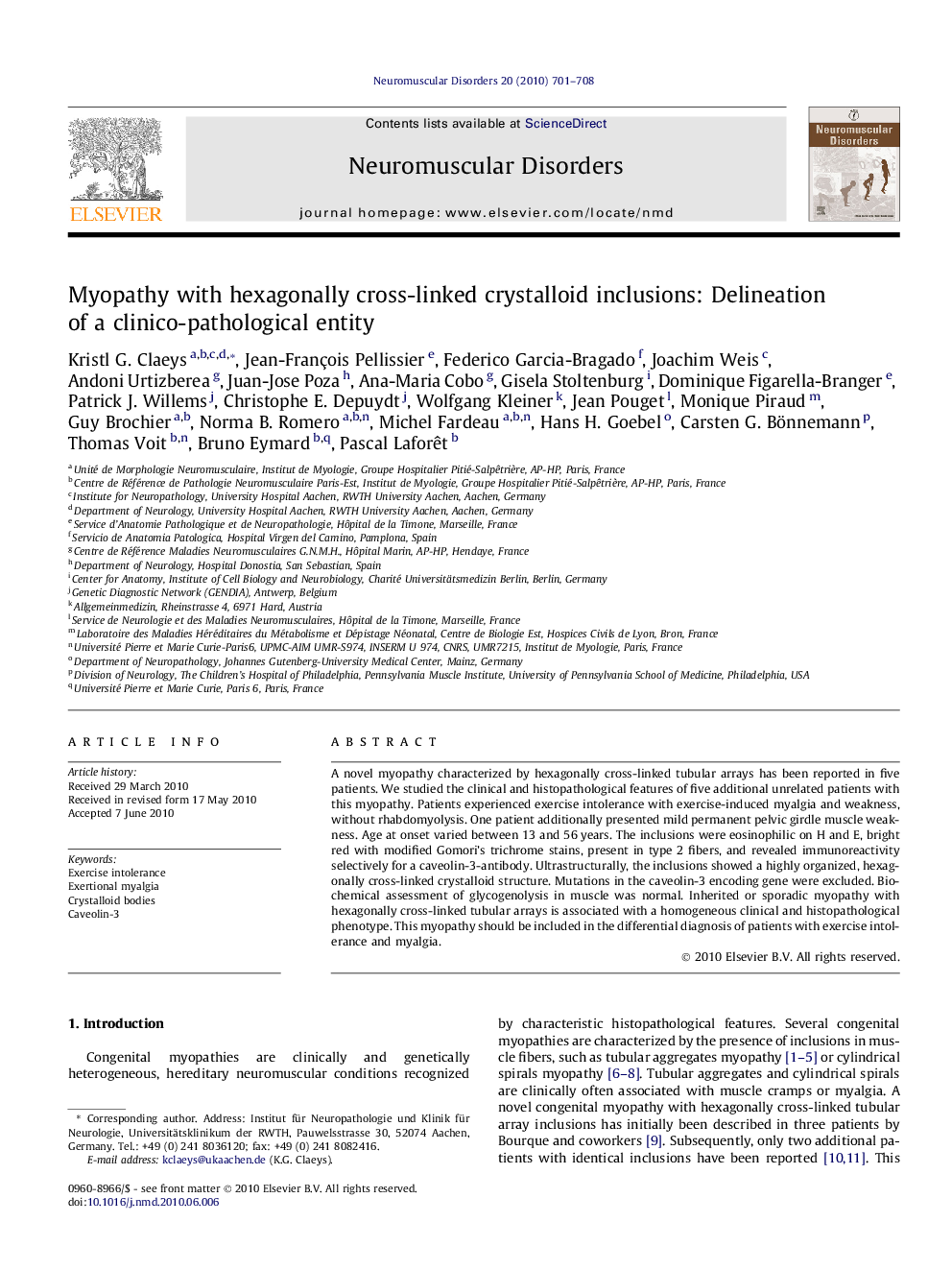| Article ID | Journal | Published Year | Pages | File Type |
|---|---|---|---|---|
| 3080260 | Neuromuscular Disorders | 2010 | 8 Pages |
Abstract
A novel myopathy characterized by hexagonally cross-linked tubular arrays has been reported in five patients. We studied the clinical and histopathological features of five additional unrelated patients with this myopathy. Patients experienced exercise intolerance with exercise-induced myalgia and weakness, without rhabdomyolysis. One patient additionally presented mild permanent pelvic girdle muscle weakness. Age at onset varied between 13 and 56Â years. The inclusions were eosinophilic on H and E, bright red with modified Gomori's trichrome stains, present in type 2 fibers, and revealed immunoreactivity selectively for a caveolin-3-antibody. Ultrastructurally, the inclusions showed a highly organized, hexagonally cross-linked crystalloid structure. Mutations in the caveolin-3 encoding gene were excluded. Biochemical assessment of glycogenolysis in muscle was normal. Inherited or sporadic myopathy with hexagonally cross-linked tubular arrays is associated with a homogeneous clinical and histopathological phenotype. This myopathy should be included in the differential diagnosis of patients with exercise intolerance and myalgia.
Keywords
Related Topics
Life Sciences
Neuroscience
Developmental Neuroscience
Authors
Kristl G. Claeys, Jean-François Pellissier, Federico Garcia-Bragado, Joachim Weis, Andoni Urtizberea, Juan-Jose Poza, Ana-Maria Cobo, Gisela Stoltenburg, Dominique Figarella-Branger, Patrick J. Willems, Christophe E. Depuydt, Wolfgang Kleiner,
